If you have had the opportunity to see the development of a swimming race where high level swimmers participate, you will be able to realize the incredible leg shake that all competitors produce, without exception.
Watch one of the semi-finals of the 100-meter freestyle at the past swimming world championships, held in the Russian city of Kazan, and watch the kicking of the participating swimmers:
Now that you have seen the performance of these athletes you will ask yourself, what causes a powerful and effective kick? The answer can be provided by the following set of 4 technical elements.
Key technical elements for swimming leg shakes
1. Kick from the hip
Many swimmers tend to bend their knees too much when kicking, meaning that their kick originates from the knees . This creates an enormous amount of resistance, becoming the main reason many swimmers have their legs sinking. Instead of kicking from the knee, you should always kick from the hips, keeping your legs relatively straight.
Some of the athletes who most frequently experience problems in this regard are triathletes. The other two disciplines that make up the sport of triathlon, cycling and running, develop a lot of strength from the knee, making it easy for triathletes to transfer that habit to the pool. As soon as you bend your knee, you place your thigh directly facing the flow of the water. This causes the water to push against the leg, significantly increasing the resistance that the water exerts on your body.
By developing good kicking technique, you will be able to bend your knee slightly during the downward leg movement. Try not to think too much about not bending the knee. It is more advisable that you concentrate on originating the shake from the hip with the legs straight, during the execution of this movement the knee will end up bending naturally.
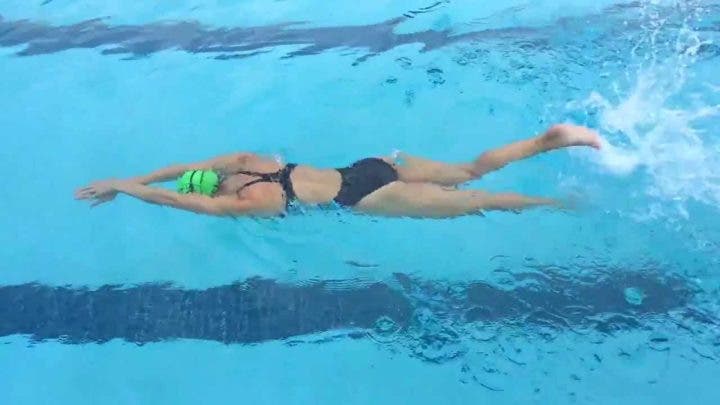
2. Good plantar flexion
Plantar flexion or standing on your toes is the most important position you should learn and train. When swimming, you should always place your feet in this position, creating a lower profile in the water. If you cannot get your feet in this position, your toes will begin to push water forward when you kick, resulting in a dramatic slowdown in your movement in the water.
3. Ankle flexibility
Many athletes, particularly triathletes, have poor plantar flexion , which greatly limits their ability to put their feet on their toes. In an ideal world, you should be able to flex your feet beyond the horizontal line, if you were sitting.
If you frequently practice running or cycling, your ankles may not be able to reach an ideal stretch position. This could seriously affect your kicking technique, to the point that it could slow your progress in the water.
Working on improving the flexibility of your ankles to improve the stretch position of the feet is not only possible, it is actually relatively simple. All you have to do is do a few ankle stretching exercises and in no time you’ll start to see that aspect start to improve. This will manifest itself in a reduction in the resistance that water exerts on your body and therefore a better movement through the water.
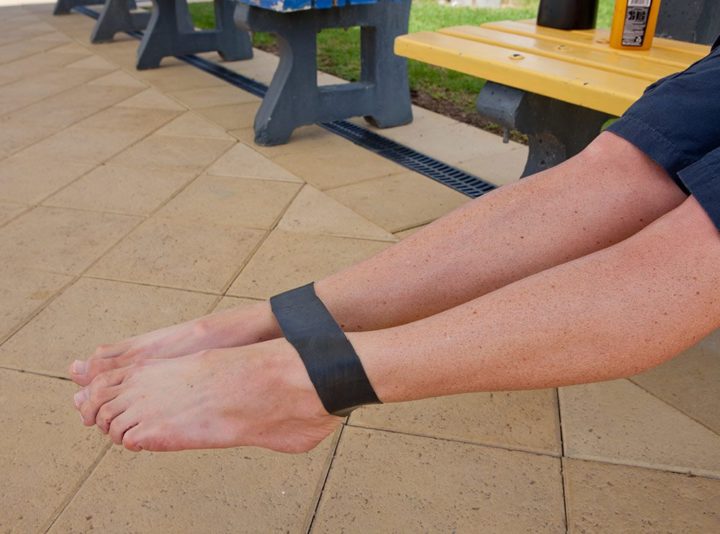
4. Rhythm
The rhythm of the kick is something that as swimmers we do not think about regularly. We have at our disposal a variety of rhythms for kicking. In swimming, the most common are 2, 4 and 6 times.
To achieve a proper kicking rhythm, you should focus on kicking with your left leg the instant the hand on your right arm is about to dive. For a 2-beat kick, this would be the only kick we need to perform, but in the 4 and 6-beat kicks, we must perform additional kicks, although it is still key that the first kick is made at the moment of entry of the hand into Water.
If you don’t get a good kick rhythm, you could be negatively affecting the rotation of your body. For many swimmers the kick comes naturally. Unless you detect a problem in the rhythm of your kicks, do not pay too much attention to this aspect. Focus on keeping your feet pointed and kicking from the hips.
A good kick can become your secret weapon, so we recommend that you focus on developing and perfecting it. Whether it’s easy for you or not, a strong kick will help you close your runs well. With that being said, let’s learn how to harness the power of your legs in the pool.
Tips for developing a world-class kick
1. Emphasize kick series
To achieve improvements in your kick, you will have to frequently dedicate complete sets to this aspect. At least twice a week you should do intense leg work, through which you work resistance and intensity. You can separate these sets into descending segments, or you can focus your reps on keeping a constant average.
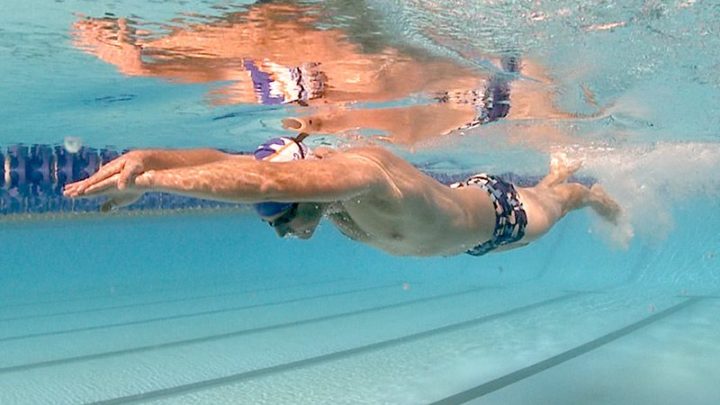
2. Quality kick
To measure your progress, at least once a week, do a full-speed rep where you record the time. This could be 100 meters of timed kicking, performed at the end of training. This will help you develop a beefy kick. Remember, if you want to have a fast kick, you must kick fast during practice.
One piece of advice that I share with you and that has worked very well for me over the years is to pay close attention to kicking on your back , as it best simulates kicking in a competitive environment. By focusing your attention on this aspect, your legs will develop fast twitch fibers, resulting in dramatic improvements in your swimming style.
3. Build dry power
During your dry work, focus your attention on explosive leg work. It is much easier to develop powerful legs in the dry than in the pool. Exercises like jumping jacks and burpees are great for increasing power in your legs. Also, exercises like weighted squats and lunges are great for building strong muscles like the quadriceps and hamstring, as well as strengthening the gluteal muscles.
Your ability to kick consistently and forcefully will improve if you really give importance to this aspect of your swimming. During your dry work sessions, work hard on your legs and trunk, dedicating entire basic sets to kicking in your sessions in the water. As in the other aspects of your swimming, you should always train at running speed to be able to integrate the improvements in kicking that you gain in your new style.
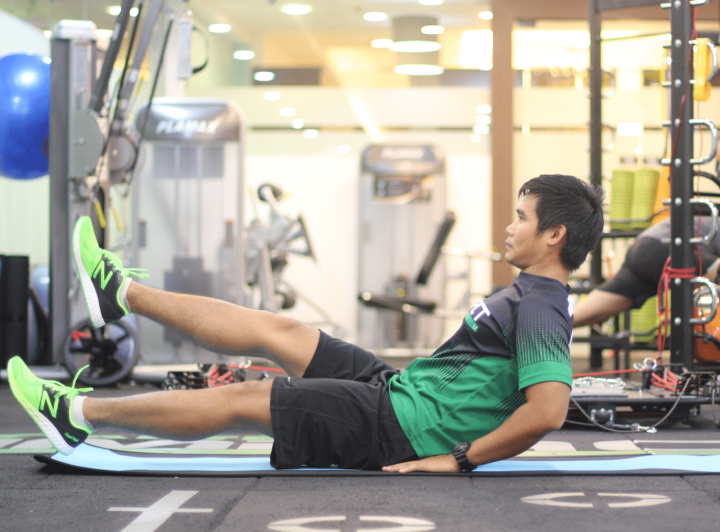
4. Train your kick relative to your ideal running speed.
Another way to improve your kick is by performing kick series relative to your ideal running speed, or rather the speed at which you plan to swim in your next competition.
For example, if your goal for the next competition is to swim the 100 meters free in 1 minute and 10 seconds , you should perform your kicking sets at an effort above the race pace you want to maintain in the race.
The following series could provide you with examples to perform during your workouts.
Examples of workouts to improve your leg shake
1. 10 x 50 meters of kick in 1’30 ”
- The first 5 reps at an effort of 120% of your running pace.
- Remaining reps with effort 5 of 115% of your running pace.
2. 6 x 100 I kick every 3’30 ”at an effort of 120% in relation to your running pace.
Series like this are highly effective for swimmers of all ages since by being focused on future results, these boys and girls feel more committed to their workouts that include leg work and at the same time remain highly motivated to work kicking with more effort than in the past.
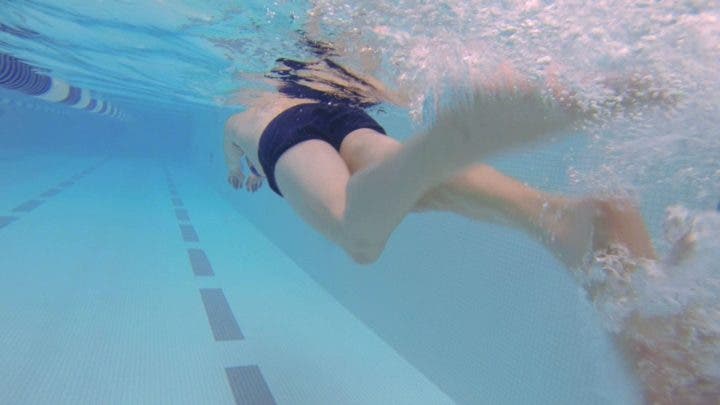
Conclution
Developing a strong leg shake can become the secret weapon you have been looking for for a long time to improve your results during the workouts you do daily. A strong, consistent kick will help you propel yourself faster and help you outrun your opponents in the final meters of a race.
By changing the way you think about leg work, you increase the level of importance you place on your preparation program. Start talking about your new best kick rep records, and push yourself to cover more and more distance at full speed during your kicking trials.
Don’t underestimate the importance of this aspect. By making a concentrated effort on the kick, in a short time you will see your performance improve. Work hard and show your colleagues and competitors the quality of the work you have been doing, becoming the example to follow.